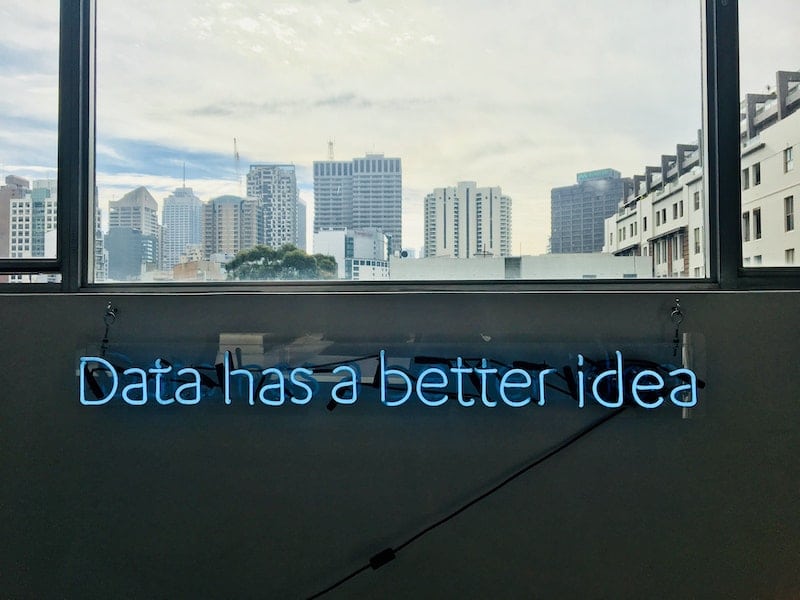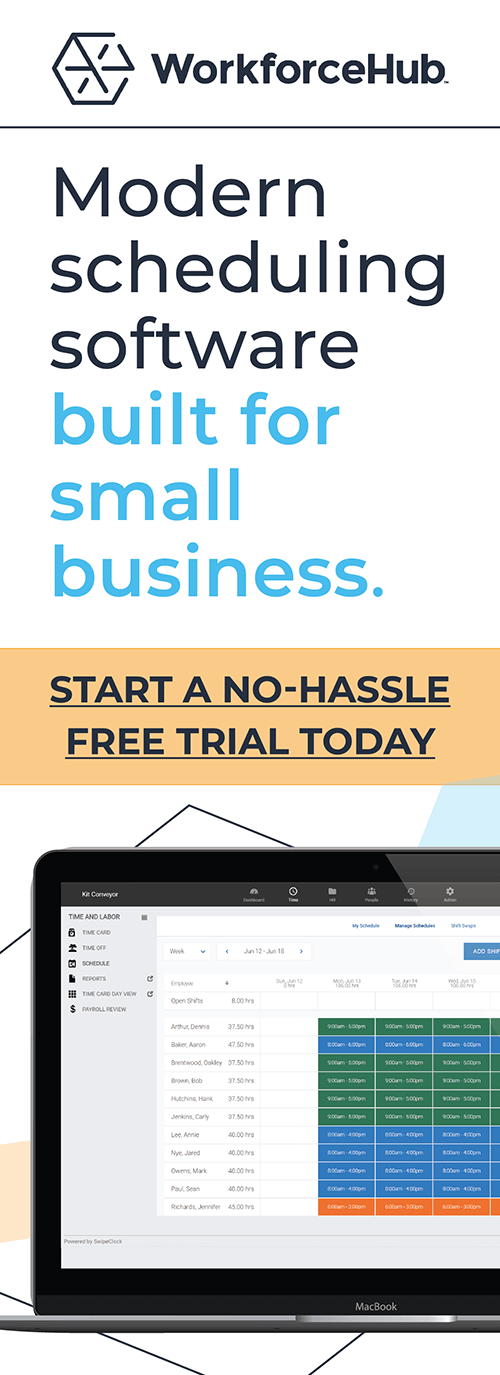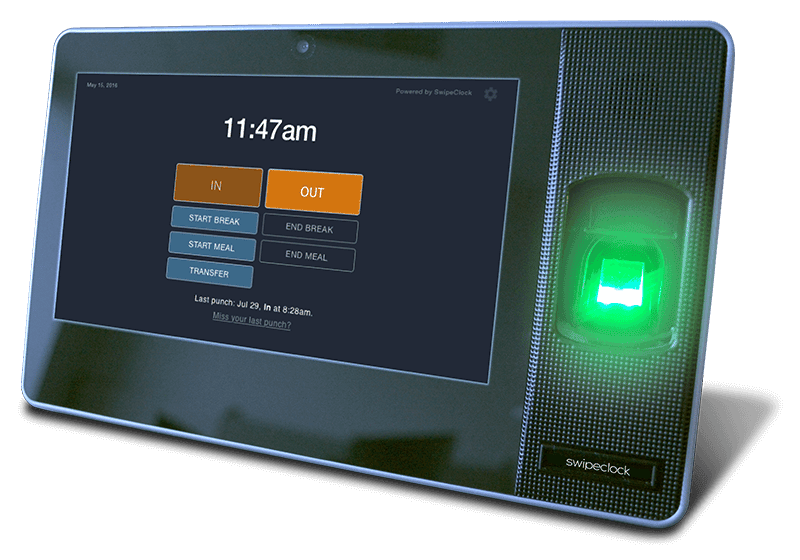What is the Importance of HR Metrics Analysis?

Any small business that doesn't use HR metrics analysis will fall behind. Today's environment is too volatile and competitive not to take a scientific approach.
“Without big data, you are blind and deaf and in the middle of a freeway.” – Geoffrey Moore
When you improve even one variable using HR metrics analysis, it can trigger a chain reaction of benefits.
"The point is to “get past the ‘what’ and fully understand the ‘why.' The benefit of using metrics is that the decisions are better-informed and backed by facts—rather than hunches—and thus make key people decisions far more ‘sellable’ to the business.”–Cecile Alper-Leroux,
HR metrics, or Human Resources metrics, are Key Performance Indicators (KPIs) on people operations. Businesses track them to measure and improve performance, engagement and productivity.
Small business HR teams can track metrics for all workforce processes. This includes hiring, pay, time and labor, training, engagement and retention.
Common HR metrics and HR metrics formulas include:
- Time-to-hire: average number of days it takes to fill a position
- Cost-per-hire: the average cost of hiring a new employee
- Time-to-productivity: the period of time from hire to full productivity
- Employee turnover rate: the number of separations per year divided by headcount
- Absenteeism or absence rate: employee absences in a given period divided by number of employees
- Overtime: the ratio of overtime to total hours worked for a given period
- Revenue per employee: net revenue divided by number of employees
- Diversity and inclusion: total hires within a set period of time divided by specified demographic
What is the importance of HR metrics analysis?
HR metrics provide insights so HR leaders can make better decisions and improve Human Resource management. They are essential for improving HR practices.
“Without big data, you are blind and deaf and in the middle of a freeway.” – Geoffrey Moore
Using analytics isn’t difficult but it does take a little time and commitment. This is the basic process:
- Gather data about your workforce
- Analyze the data in the context of overall business strategy
- Make changes to improve operations
- Assess whether the changes are working
- Adjust as necessary
“The point is to “get past the ‘what’ and fully understand the ‘why,’ The benefit of using metrics is that the decisions are better-informed and backed by facts—rather than hunches—and thus make key people decisions far more ‘sellable’ to the business.” Cecile Alper-Leroux, VP of Human Capital Management Innovation for Ultimate Software, 9 Tips for Using HR Metrics Strategically, SHRM
Download our new infographic Six Ways to Accelerate Small Business Growth with HR Metrics.
What are the benefits of tracking HR metrics?
Certainly, the importance of using Human Resource analytics cannot be overstated. Any small business that doesn’t use HR metrics analysis will fall behind. Today’s environment is competitive not to take a scientific approach to HR processes.
Let’s highlight some high-level benefits. As you read through these, consider the sub-parts within each category:
- Improve labor resources allocation (scheduling, bidding, hiring, compensation)
- Predict the results of proposed changes with ‘what if’ scenarios (PTO policies, benefits changes, additional shifts, additional locations, hybrid schedules, team makeup)
- Improve employee satisfaction and employee retention
- Increase HR efficiency
- Reduce compliance risks (hiring laws, diversity regulations, overtime, minimum wage, exempt vs non-exempt classification, FMLA, PBJ, ACA)
- Improve the ROI of HR programs (employee engagement, wellness, financial planning, performance)

Photo by Jason Goodman on Unsplash.
Start with one process
So, how do you get started? We recommend that your HR department start with just one process, say turnover rate or time-to-hire. When you improve even one HR activity using HR metrics analysis, it can trigger a chain reaction of benefits.
Example: overtime per manager
As an example, let’s talk about one HR KPI: overtime. Specifically, overtime per manager. You can do this with a simple timecard report.
Suppose you discover that 60% of employee overtime occurs with one manager. Now it’s time to dig into the data and figure out why. Perhaps the production goals are unrealistic. Maybe the team is understaffed. Or perhaps the manager simply doesn’t know how to build shift schedules.
In our example, let’s suppose you compare scheduled hours to actual hours worked for the manager’s team. When you review the employee timecards, you discover that several employees habitually stay on the clock for lunch, which is supposed to be unpaid.
With this knowledge, you can take measures to solve the problem. First, you would need to review the policy with the manager who should, in turn, review it with the team members. You could also get a time clock with meal break prompts. Furthermore, a timekeeping system with missed punch alerts could help.
The ripple effect
When you’ve worked to fix the situation, the improvements would compound. First, your profit margin would increase due to less overtime. Secondly, less overtime could improve employee morale. Thirdly, better morale could help you keep employees longer. Lastly, improved retention would save on recruiting and training costs.
This is an example of working on just one process. Consider the impact of using HR analytics to improve many HR initiatives. Think employee performance, workforce management and HR efficiency.
In addition to comparing HR analytics to historical data, compare it to similarly-sized companies in your industry. It’s good to know the average turnover rate, for example, or time-to-hire.
What tech simplifies HR analysis and talent analytics?
Human Resources Management Systems (HRMS), Human Resources Information Systems (HRIS), and Human Capital Management (HCM) are all types of HR software that can track metrics.
These systems are suites of HR tools that work together. These tools include:
Applicant tracking system (ATS)
An ATS helps recruiting teams lower hiring costs, find better talent and use hiring metrics to fine tune processes.
Onboarding systems
When you use an onboarding system with a structured process, you will increase engagement for new hires. This speeds up time-to-productivity and lowers the risk of voluntary turnover–especially in the critical first year.
Performance management systems
Successful companies make sure managers do performance reviews often. Performance management software helps teams track performance over time.
Leave management systems
With COVID leave added to the mix, leave management has never been more complex. Tracking PTO, state and federal family leave, and other types of leave with spreadsheets is hard. Leave management software makes it a lot easier. Employers can customize the software for their company PTO policies, state and federal laws, and union or government contracts. Automating this process saves time, improves accuracy and protects against compliance issues.
Learning management systems (LMS)
A learning management system is an online platform for managing training. (Self-directed digital training is also called eLearning.) An LMS allows HR teams to customize and track training in a centralized location. These products often integrate with onboarding or performance management software. With the increase in remote working, an LMS is a must-have for modern workforces.
Employee timekeeping and scheduling software
Time tracking is a foundational business process. Paycheck accuracy is paramount. To best use your workforce, you need to-the-minute employee time and attendance. Cloud-based software synced with hardware clocks provides a unified timekeeping solution. The system captures punches, confirms identity, tracks hours, meals and PTO, enforces schedules and prevents time theft. Mobile clock-in and geofencing allow companies to track offsite punches and location.
Employee scheduling and timekeeping are interrelated. Certainly, shift planning impacts efficiency. Scheduling software allows you to create schedules in minutes using templates and drag-and-drop. Schedule modules synced to timekeeping simplifies schedule access, timecard submission, shift trades, and PTO. Overtime alerts help prevent unplanned overtime and related compliance issues.
Benefit management systems
Employee benefits are both extremely important and notoriously difficult to manage. Using specialized software to manage retirement plans, health insurance and other benefits is a best practice used by successful companies.
Up-to-date HR tech is essential if you want your business to grow. But many business owners are hesitant to dive in.
It’s not complicated…
Now that we’ve made the case for using HR reporting and analysis, why don’t more small businesses use it? Why don’t they invest in intelligent HR automation? As a small business software provider, we talk to a lot of small businesses in the course of our work. Over the years, we’ve discovered the issues at play. For example, some small business teams think it sounds too complicated. This is an unfortunate misconception. The reality is that running a business without it couldn’t be more complicated. It’s like trying to navigate an obstacle course in the dark.
Even in a small business, there are plenty of moving parts. Furthermore, many small orgs don’t have an HR manager–an employee manages HR functions in addition to their primary role. For these reasons, HR metrics and reporting are just as critical for a small company.
Analysis saves time in the long run
Another misconception is that tracking HR metrics is time-consuming. Again, this is a fallacy. With the right work tech, such as a small business Time and Labor platform, it’s fast and easy. Tracking metrics with an HR solutions saves everyone time. That includes you, your employees, middle management, the HR manager, and even your customers. An HR system automates processes along with key HR metrics and reporting. In fact, some businesses can automate up to 80% of HR functions with the right software.
WorkforceHub is an affordable, quick to deploy workforce management system and HR analytics tool intentionally designed for the complexities of running a small business. To see it in action visit WorkforceHub and schedule a demo.
Shopping for a small business Time and Labor solution? Download our free Time and Labor Buyer’s Guide. It has feature explanations and evaluation checklists to help you choose a system with confidence.
Top photo by Franki Chamaki on Unsplash.
Simplify HR management today.
Simplify HR management today.
The Importance of Facial Recognition Time Clocks for Small Businesses
Updated April 17, 2024 A facial recognition time clock is no longer a luxury. Advanced biometric clocks are a must-have for today’s workplaces. A facial recognition time clock is the best technology for tracking employee time. It solves a multitude of problems employers are facing with their workforces. What is a Facial Recognition Time Clock?…
Read MoreEmployee Time Clock Hardware: Which is the Best?
Updated April 9, 2024 What is employee time clock hardware? An employee time clock is a hardware device for tracking work time. To use it, employees ‘punch’ in/out or ‘clock’ in/out. The term ‘punch in’ stems from early employee time clock hardware that required a physical card. With a traditional mechanical time clock, the process…
Read More





